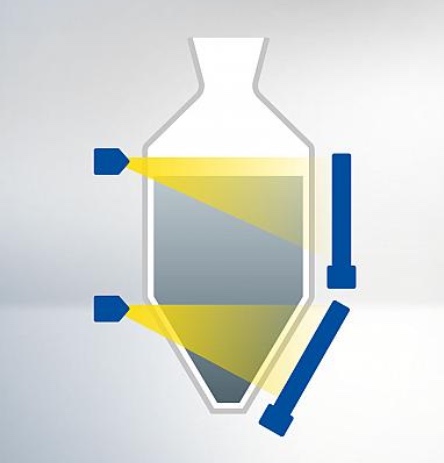11-03-2025
Unlocking hidden costs: The impact of quality giveaway in refineries
Considering refinery giveaways. Refineries often focus on maximizing per-barrel profit margins by adjusting crude slates and unit operations to optimize the market value of finished products. However, this strategy sometimes overlooks a crucial aspect: the impact of unit operations, margin incentives, and potential areas of quality giveaway.
What is Quality Giveaway? Quality giveaway occurs when a refinery produces a product of higher quality or value than the market is willing to pay. Essentially, it refers to the variance between actual product results and the specified product results, representing lost margin opportunities. These giveaways erode profits on gasoline, distillates, and heavy oil sales and show up as opportunity costs on the refinery’s income statement.
Gasoline Blending Giveaway
For gasoline blending, common metrics include octane giveaway and volatility giveaway.
- Octane Giveaway: Reducing octane giveaway doesn’t necessarily lead to immediate profit changes. Instead, it allows refineries to blend more premium gasoline or sell high-octane component inventory, thereby improving overall blending efficiency.
- Volatility Giveaway: This relates to the cost of not using butane as a blending component. Since butane is a low-cost gasoline blending component, maximizing its use can lower the refinery’s cost per blend and reduce overall operational expenses.
Distillate Blending Giveaway
For distillates, refineries monitor specifications such as sulfur, flash point, pour point, and cloud point giveaways, which directly affect the severity of diesel-producing units, primarily the refinery's diesel hydrotreaters.
- Reducing Giveaway Benefits: Lowering distillate giveaways can increase the severity of the unit, allowing refineries to process lower-quality feedstocks like light cycle oil or increase the unit run length, maximizing efficiency and pairing better with upstream units. Additionally, focusing on sulfur giveaway can result in several benefits, including:Increased run length or severity, Reduced catalyst deactivation, Lower hydrogen and hydraulic pressure, Decreased fuel gas consumption, thus reducing energy costs
Heavy Oil Giveaway
Heavy oils, often referred to as bottom-of-the-barrel products, are generally traded based on sulfur markers or viscosity. Refineries evaluate their performance through API gravity, viscosity, or sulfur giveaways, which are key specifications. While not always held to strict specifications, refineries can still assess their performance based on per-barrel margin evaluations.
- Cutterstocks and Market Value: Cutterstocks like LCO, ICO, and diesel may not be standard refinery cutterstocks, but they can still increase a refinery’s per-barrel margin based on gasoline, diesel, and heavy oil market values. Different cutterstocks also offer varying benefits to viscosity compression, a key specification in some markets.
The Overlooked Giveaway
In our experience, refineries often concentrate their efforts on octane giveaway and overlook other dimensions of giveaway. While octane giveaway is an important metric, quality giveaway can occur across various product streams, impacting refinery margins considerably. From our experience, a typical 150,000 bpd refinery may experience upwards of $30 million in giveaway across gasoline, distillates, and heavy oils.
Conclusion
Understanding and addressing quality giveaway across all product streams is vital for refineries looking to optimize their margins. By focusing on not only gasoline but also distillate and heavy oil giveaway, refineries can identify hidden inefficiencies and unlock significant value. Implementing targeted strategies to reduce giveaways can help refineries improve profitability and operational efficiency, ultimately leading to a stronger bottom line.
Without capital investment, we create actionable ways to sustainably increase refinery margins by 2-3%. Contact us for a complimentary assessment, to help solve your complex business issues. We are here to Make It Happen™.
Sponsor:
News Category:
-
Refinery performance: How to control hydrocarbon loss
Reducing Hydrocarbon Loss in Refineries: A Data-Driven Approach. Hydrocarbon loss costs refineries millions of dollars every year. It happens when systems, processes, ...
03-06-2025
-
Turning losses into gains: Smart controls that strengthen your bottom line
The Oil & Gas industry has always been defined by one constant - unpredictability. Market volatility continues to challenge even the most resilient organizations. ...
27-05-2025
-
Using mass balance as a refinery KPI: Why accuracy matters
The use of mass balance as a measure of refinery loss control performance has been debated for years. While mass (or weight) is generally a better indicator of performance ...
15-05-2025
-
Gasoline blending: Are you aiming at the right quality targets?
At Trindent Consulting, we've consistently seen that refineries often give away twice as much quality in gasoline blending as necessary. The root cause? In many cases, ...
06-05-2025
-
Crude prices are increasing: Why hydrocarbon loss control deserves attention
As crude oil prices continue to decline, a notable number of refineries, particularly those operating with thinner margins, are choosing to scale back or fully suspend ...
29-04-2025
-
Truck rack process optimization: Unlocking efficiency without capital investment
In refinery operations, process effectiveness is not solely a matter of procedures. It hinges on a critical balance between three pillars: the process itself, the system ...
22-04-2025
-
Boosting refinery margins through blend optimisation and loss control
In the current fast-paced and cost-sensitive refinery environment, enhancing margins is no longer just a competitive advantage, it’s essential for survival. This exclusive ...
09-04-2025
-
Trindent Consulting is proud to share that we have been awarded the prestigious 2019 Supplier Recognition Award by Marathon Petroleum Corporation, in the category of ...
08-04-2025
-
Driving results: A client’s perspective on blending practice transformation
Driving $40M+ in Annualized Savings Through Gasoline Blending Optimization. A leading North American refining corporation partnered with Trindent Consulting to optimize ...
01-04-2025
-
Are process inefficiencies costing you more than you realize? How six sigma solves the puzzle
Six Sigma, What’s Needed to Succeed. Six Sigma, the popular methodology for process improvement, is a statistical concept that identifies the variation inherent in ...
18-03-2025

















